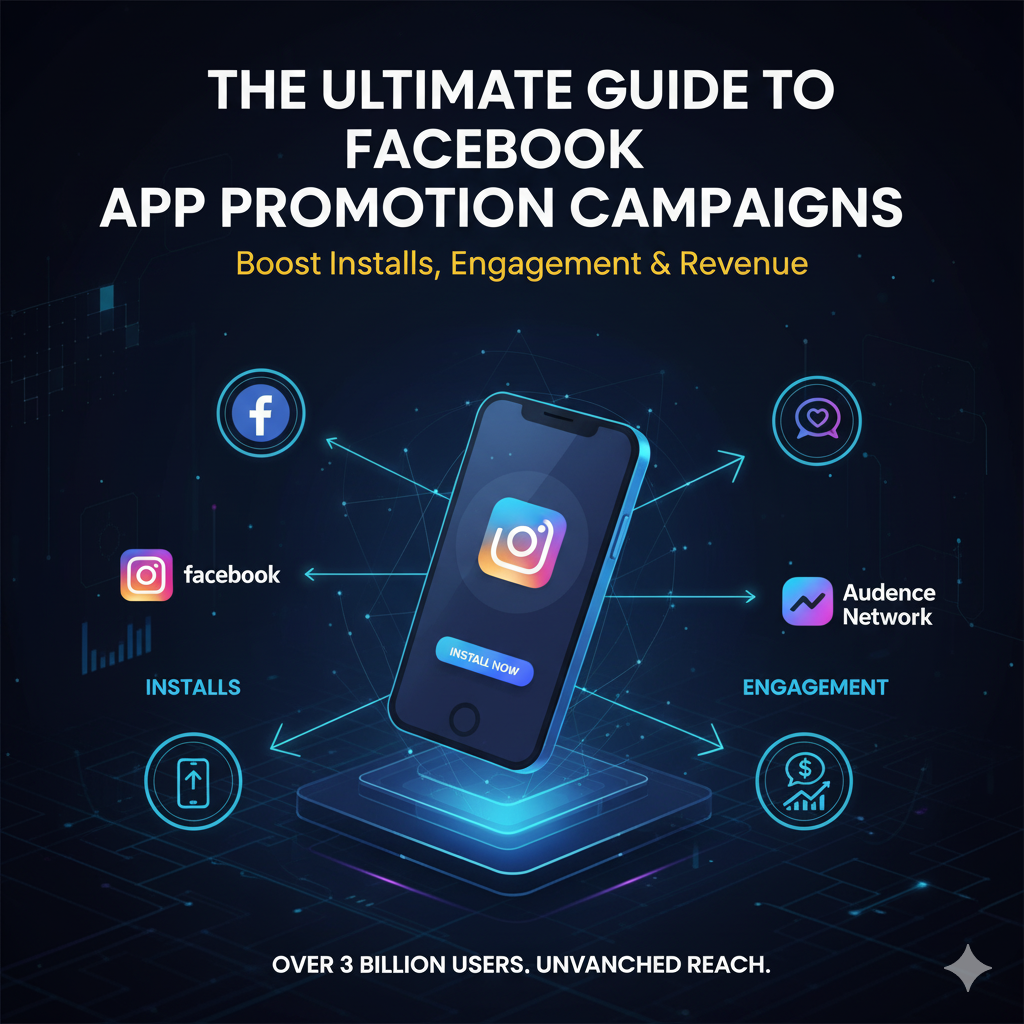
In the ever-growing mobile app market, having a great app isn’t enough—effective promotion is key to success. With over 3 billion users across Facebook, Instagram, Messenger, and the Audience Network, Facebook Ads offers one of the most powerful platforms for app promotion. This guide dives deep into creating, optimizing, and scaling Facebook App Promotion Campaigns that drive installs, engagement, and revenue.
1. Why Facebook App Promotion Campaigns Matter
Facebook app promotion campaigns allow you to:
- Reach users who are most likely to download and engage with your app.
- Retarget users who installed the app but are inactive.
- Track measurable KPIs, such as Cost Per Install (CPI), in-app purchases, and retention rates.
Unlike generic campaigns, app promotion campaigns are tailored for mobile-first experiences, ensuring your ads drive users directly to the app store and encourage installation.
2. Types of App Promotion Campaigns
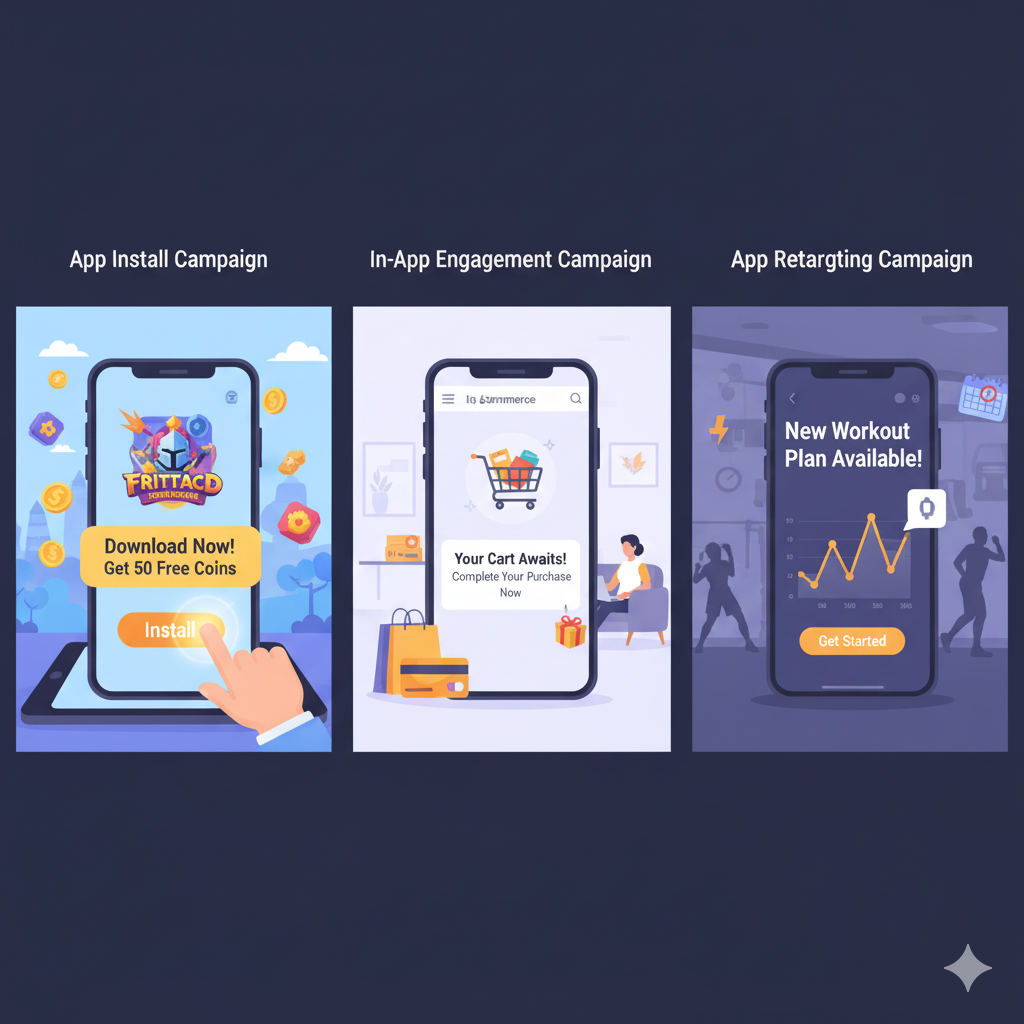
- App Install Campaigns
- Goal: Acquire new users for your app.
- Best for: New apps, app launches, or increasing install volume.
- Example: A gaming app promoting “Download now and get 50 free coins.”
- Goal: Acquire new users for your app.
- In-App Engagement Campaigns
- Goal: Encourage existing users to take specific actions like purchases, subscriptions, or completing levels.
- Best for: Increasing revenue and active user base.
- Example: A shopping app reminding users about abandoned carts.
- Goal: Encourage existing users to take specific actions like purchases, subscriptions, or completing levels.
- App Retargeting Campaigns
- Goal: Re-engage users who have installed the app but haven’t been active recently.
- Best for: Increasing retention and lifetime value (LTV).
- Example: A fitness app sending a “New workout plan available” promotion to inactive users.
- Goal: Re-engage users who have installed the app but haven’t been active recently.
3. Step-by-Step Guide to Setting Up a Campaign
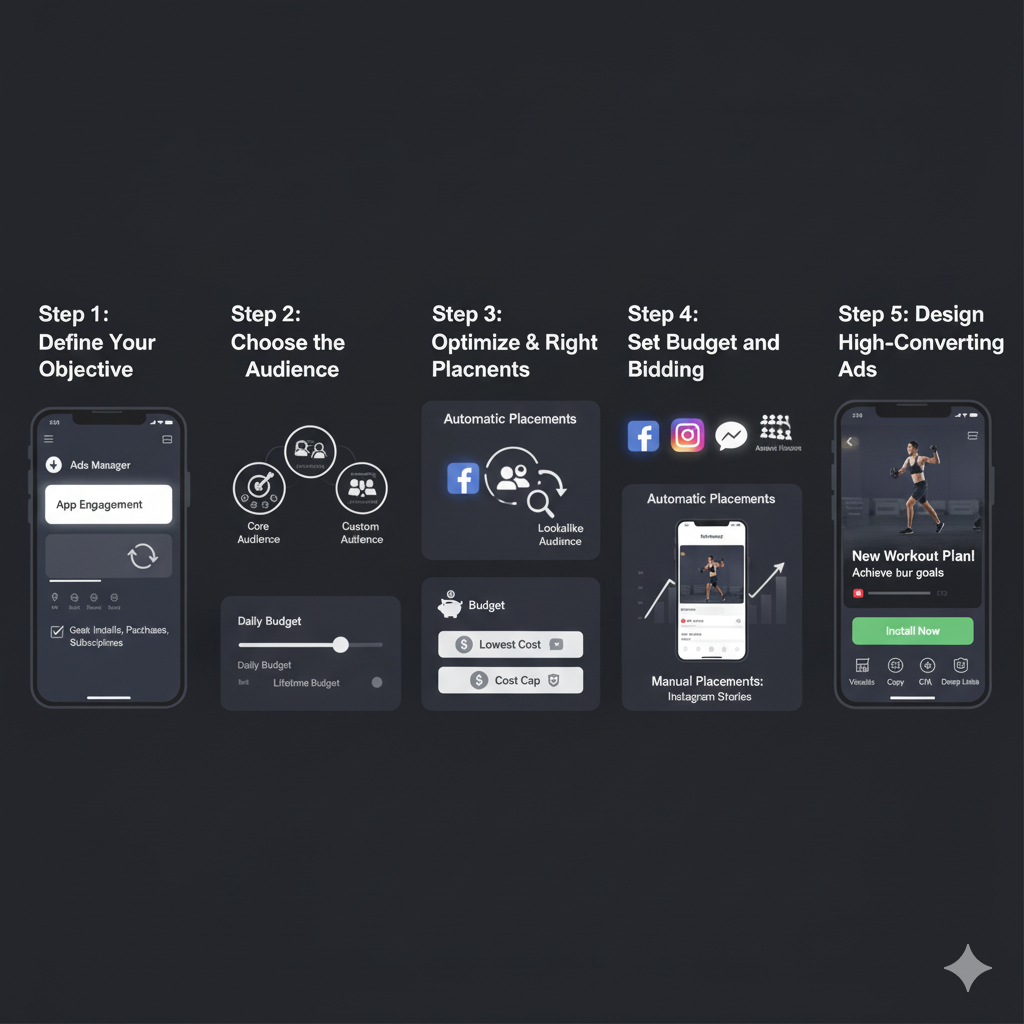
Step 1: Define Your Objective
- Select App Installs or App Engagement as your campaign objective in Ads Manager.
- Set clear goals: installs, in-app actions, subscriptions, or purchases.
Step 2: Choose the Right Audience
- Core Audience: Target by demographics, interests, location, devices, and behaviors.
- Custom Audience: Retarget users who interacted with your app or website.
- Lookalike Audience: Find new users who resemble your top-performing customers.
Step 3: Optimize Placements
- Automatic Placements: Recommended for beginners to maximize reach across Facebook, Instagram, Messenger, and Audience Network.
- Manual Placements: Choose placements where your app audience engages most, e.g., Instagram Stories for a younger audience.
Step 4: Set Budget and Bidding Strategy
- Daily Budget or Lifetime Budget options.
- Choose Lowest Cost to maximize installs within budget or Cost Cap to control CPI.
Step 5: Design High-Converting Ads
- Visuals: Use eye-catching images or videos demonstrating app functionality.
- Copy: Keep text concise and benefit-driven. Highlight app features and incentives.
- Call-to-Action (CTA): “Install Now,” “Download,” or “Play Now.”
- Deep Links: Direct users to specific sections of your app to improve experience.
4. Measuring Success: Key Metrics to Track
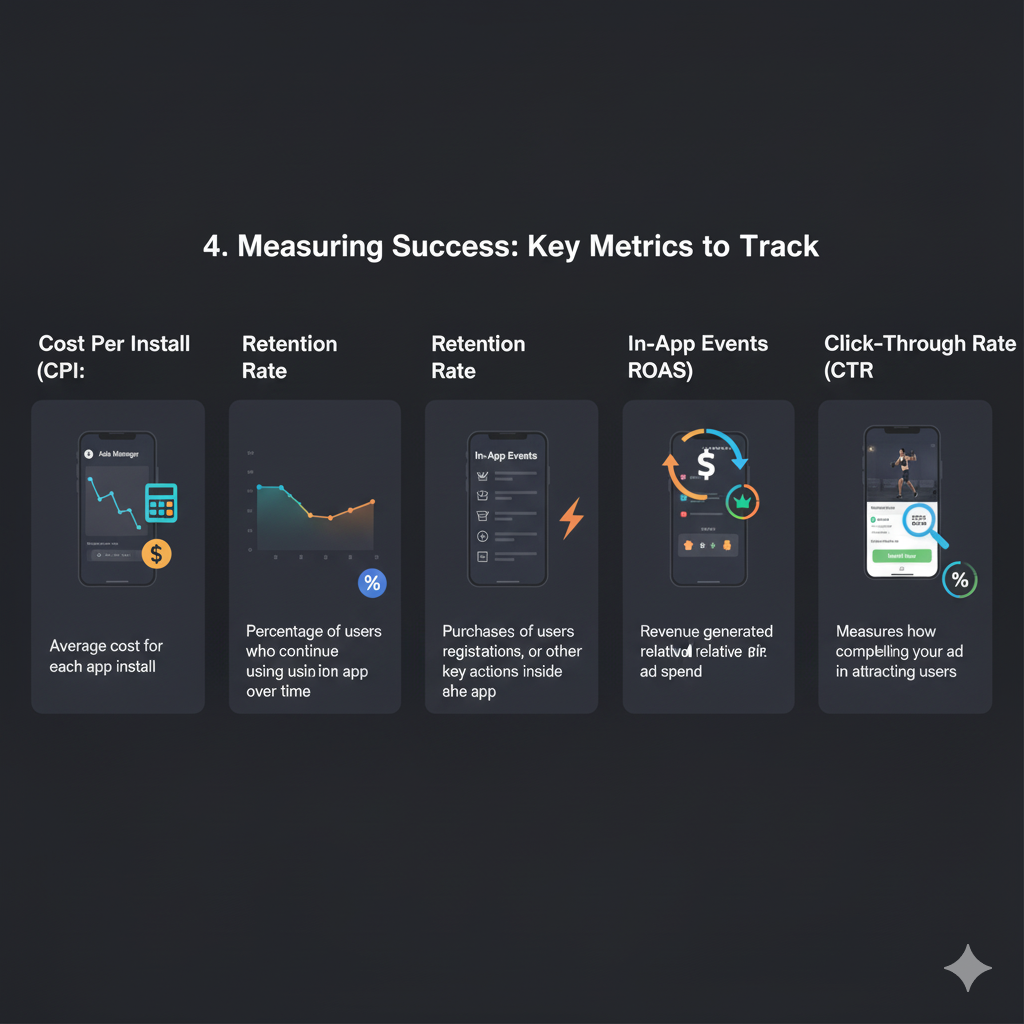
- Cost Per Install (CPI): The average cost for each app install.
- Retention Rate: Percentage of users who continue using the app over time.
- In-App Events: Purchases, registrations, or other key actions inside the app.
- Return on Ad Spend (ROAS): Revenue generated relative to ad spend.
- Click-Through Rate (CTR): Measures how compelling your ad is in attracting users.
5. Strategies for Maximizing Results
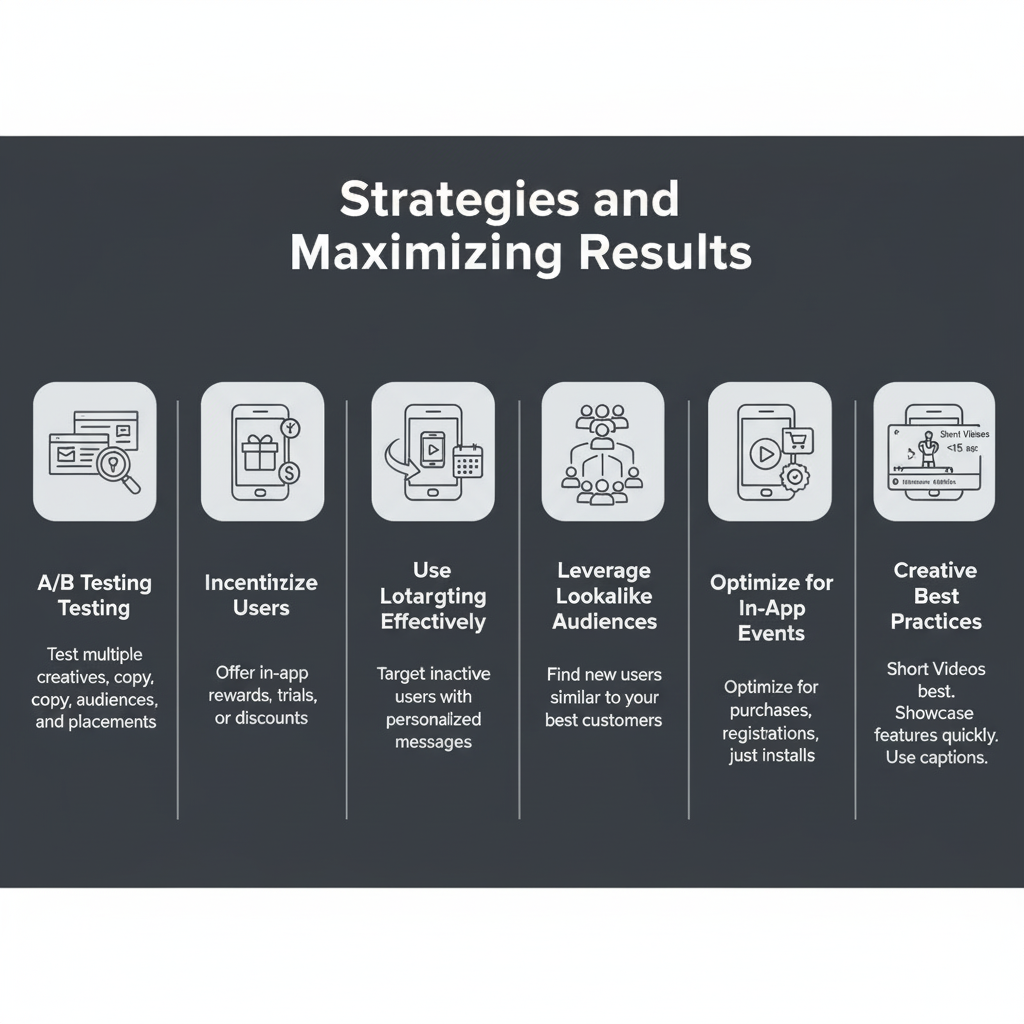
- A/B Testing:
- Test multiple ad creatives, copy variations, audiences, and placements to find what works best.
- Test multiple ad creatives, copy variations, audiences, and placements to find what works best.
- Incentivize Users:
- Offer in-app rewards like free coins, trial periods, or discounts to increase installs and engagement.
- Offer in-app rewards like free coins, trial periods, or discounts to increase installs and engagement.
- Use Retargeting Effectively:
- Target users who installed the app but haven’t taken a key action, using personalized messaging and incentives.
- Target users who installed the app but haven’t taken a key action, using personalized messaging and incentives.
- Leverage Lookalike Audiences:
- Scale campaigns by targeting users similar to your highest-value customers.
- Scale campaigns by targeting users similar to your highest-value customers.
- Optimize for In-App Events:
- Instead of just focusing on installs, optimize campaigns for meaningful actions that drive revenue.
- Instead of just focusing on installs, optimize campaigns for meaningful actions that drive revenue.
- Creative Best Practices:
- Short videos (<15 sec) perform best.
- Showcase app features quickly.
- Include captions for videos since many users watch without sound.
- Short videos (<15 sec) perform best.
6. Common Mistakes to Avoid
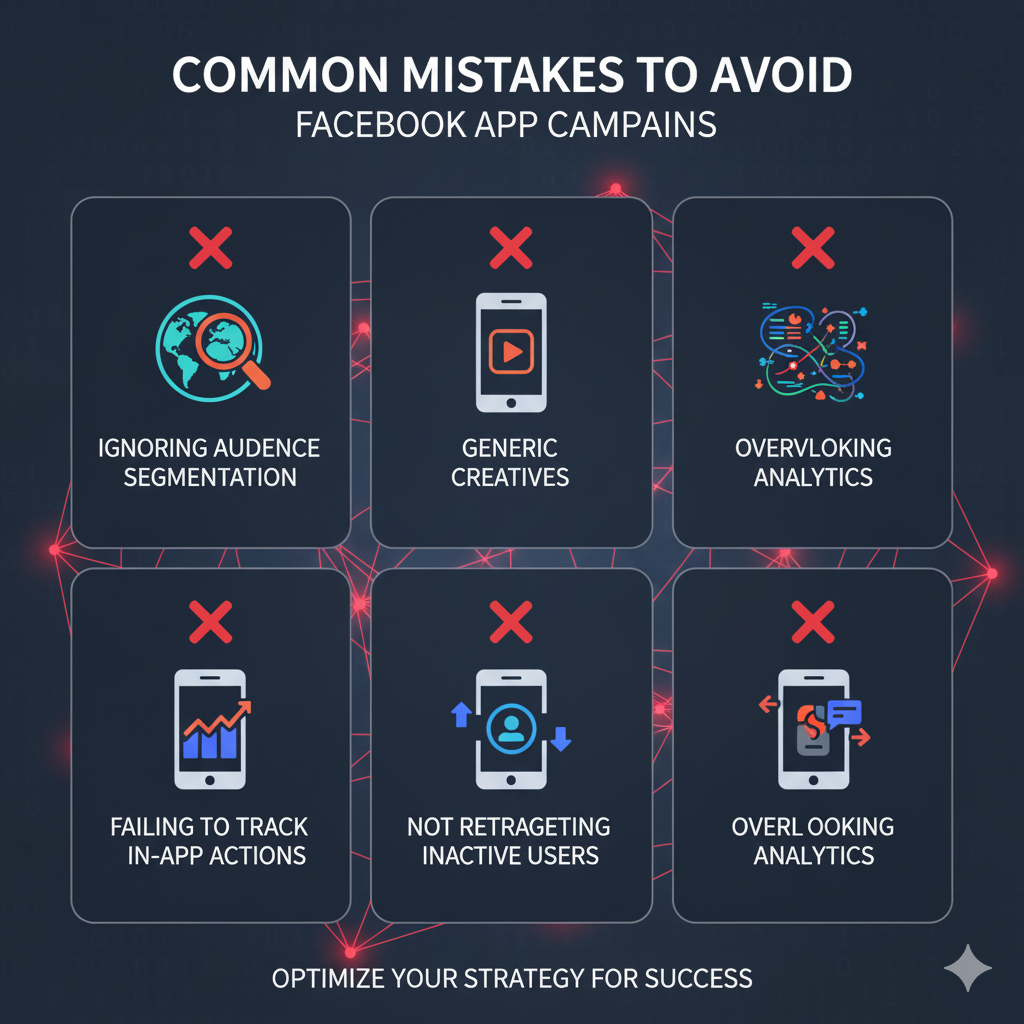
- Ignoring audience segmentation (too broad or too narrow targeting).
- Using generic creatives that don’t showcase the app’s unique value.
- Failing to track and optimize for in-app actions.
- Not retargeting inactive users.
- Overlooking analytics and key performance metrics.
7. Advanced Tips for App Marketers
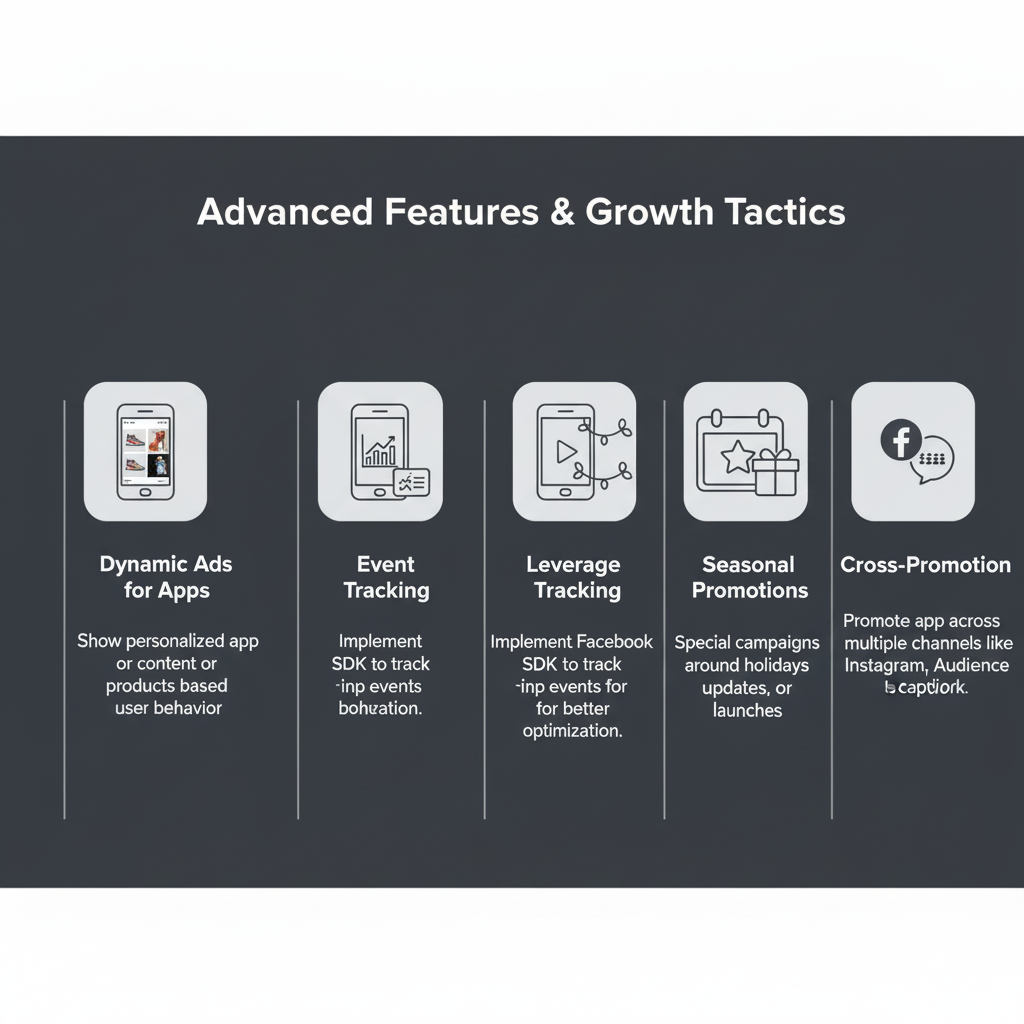
- Dynamic Ads for Apps: Show users personalized app content or products based on their previous behavior.
- Event Tracking: Implement Facebook SDK to track in-app events for better optimization.
- Seasonal Promotions: Use special campaigns around holidays, app updates, or launches to increase installs.
- Cross-Promotion: Promote your app across multiple channels like Instagram Stories, Messenger, and Facebook Audience Network for maximum reach.
Conclusion
Facebook app promotion campaigns are essential for driving downloads, engagement, and revenue in a competitive app market. By carefully selecting objectives, targeting the right audience, creating compelling ads, and continuously optimizing, marketers can maximize ROI and build a loyal user base. Successful campaigns combine data-driven targeting with creative ad design and strategic retargeting to turn casual users into long-term customers.